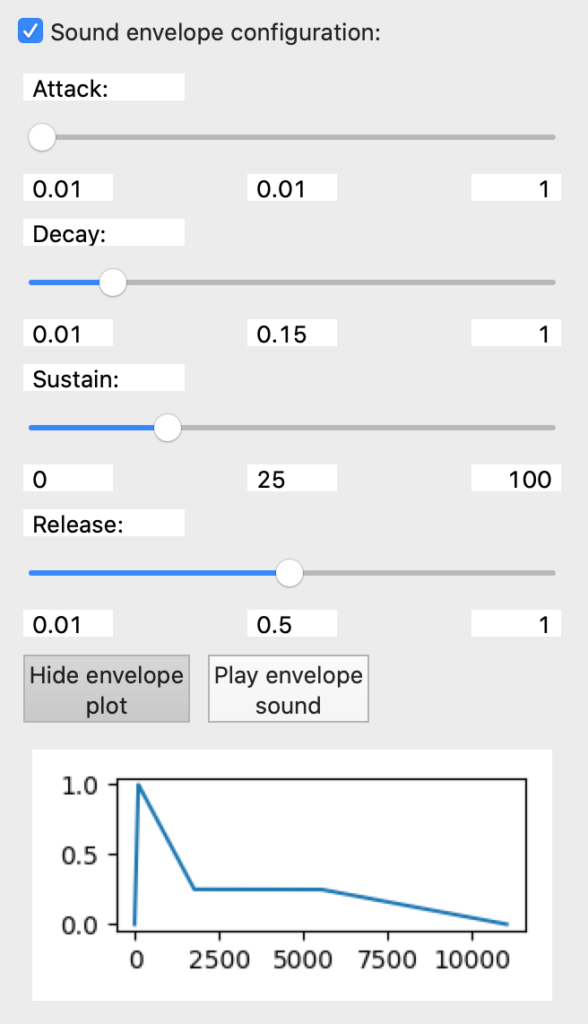This configuration uses a standard approach of wave envelope called ADSR, which controls four variables:
Attack: the time it takes for the wave intensity to rise from silence to the peak volume. The shorter this time, the more the sound resembles a strike or percussive sound (like a piano, or xylophone). A longer attack will result in a softer sound.
Decay: right after the peak is reached, the intensity takes this time to fall to a sustain level. A short decay time results in a more discrete like sound, whilst a longer decay gives longer, yet not continuous sound.
Sustain: once the decay time ends, the intensity is held at this value. It gives the sensation of instrument resonance. A high sustain level will yield a continuously playing sound, as the volume will not get low. This value can even be set to zero, so that the sound will just seem like something is hit, with no resonance at all.
Release: ending the sound abruptly not only generates artifacts in the sound hardware, but also sounds odd. The release time is what the sound takes to fade from the sustain level to silence.
Image 71, show the configuration in sonoUno

The best way to learn how these parameters affect the sound is playing with it. SonoUno can update and feed these parameters in real time so that the user can modify them and hear the effects immediately.